
Vibrant Green and Red Succulents: Perfect for Your Garden

Succulents have become incredibly popular in recent years, and it's easy to see why. These unique plants feature thick, fleshy leaves and stems that help them retain water in arid environments. Not only are they low-maintenance and drought-tolerant, but they also come in a wide range of colors and shapes, making them a perfect addition to any garden or indoor space.
We will explore the vibrant green and red succulents that are sure to add a pop of color to your garden. We will discuss the various types of succulents available, their care requirements, and how to incorporate them into your landscaping. Whether you are a seasoned succulent enthusiast or just starting your collection, this article will provide you with valuable information to help you create a stunning succulent garden.
- Choose succulents in shades of green and red to add vibrancy to your garden
- Plant these succulents in well-draining soil to ensure their health and growth
- Place them in an area that receives ample sunlight, as succulents thrive in bright light conditions
- Water your succulents sparingly, as they are drought-tolerant plants that prefer to be slightly dry
- Use a balanced fertilizer to provide essential nutrients to your succulents every few months
- Keep an eye out for pests such as mealybugs or aphids and take appropriate measures to control them
- Prune your succulents regularly to maintain their shape and encourage new growth
- Consider arranging your succulents in visually appealing combinations to create a stunning garden display
- Enjoy the low-maintenance nature of succulents and their ability to bring beauty to your outdoor space
- Frequently Asked Questions
Choose succulents in shades of green and red to add vibrancy to your garden
If you want to bring a pop of color to your garden, look no further than succulents in vibrant shades of green and red. These stunning plants not only add visual interest to any outdoor space but also require minimal care and maintenance. Whether you have a small balcony garden or a sprawling backyard, incorporating succulents in these bold hues can instantly elevate your garden's appeal.
The beauty of green succulents
Green succulents are known for their soothing and calming effect on the eyes. They come in various shades, from deep emerald to pale lime, and can be mixed and matched to create a stunning display. These plants are not only visually appealing but also offer a sense of tranquility and harmony to your garden.
- Jade Plant: With its glossy, oval-shaped leaves, the Jade Plant is a popular choice for green succulent enthusiasts. It can grow into a small tree, adding height and structure to your garden.
- Aloe Vera: Aside from its medicinal properties, Aloe Vera is also prized for its vibrant green leaves. This succulent thrives in hot and dry conditions, making it an excellent choice for gardeners in arid climates.
- Haworthia: Known for its unique, geometric-shaped leaves, Haworthia succulents come in various shades of green. They are perfect for adding texture and interest to your garden.
The allure of red succulents
Red succulents add a bold and dramatic touch to any garden. Their fiery hues create a striking contrast against the surrounding greenery, making them the perfect focal point in your outdoor space.
- Red Echeveria: This popular red succulent features rosette-shaped foliage in shades ranging from deep burgundy to bright crimson. Planting Red Echeveria in clusters can create a stunning visual impact.
- Firesticks: With its vibrant red stems, Firesticks succulents provide a burst of color like no other. These plants are perfect for adding vertical interest and can be a real showstopper when placed in a planter.
- Sempervivum: Also known as "Hen and Chicks," Sempervivum succulents come in various shades of red and form beautiful rosettes. They are incredibly hardy and can withstand harsh weather conditions.
By incorporating succulents in shades of green and red, you can create a visually stunning and low-maintenance garden. Whether you prefer the calming effect of green or the boldness of red, these succulents are sure to add vibrancy and charm to your outdoor space.
Plant these succulents in well-draining soil to ensure their health and growth
 Cascading Succulents: A Guide to Long and Trailing Varieties
Cascading Succulents: A Guide to Long and Trailing VarietiesIf you're looking to add a pop of vibrant color to your garden, look no further than green and red succulents. These stunning plants are not only visually appealing but also easy to care for, making them the perfect addition to any garden.
One of the most important factors to consider when planting succulents is the type of soil they need. Succulents thrive in well-draining soil that allows excess water to flow freely, preventing root rot and other moisture-related issues.
When it comes to green and red succulents, there are a few varieties that are particularly suited to thrive in well-draining soil. Here are some top choices:
1. Jade Plant (Crassula ovata)
The Jade Plant is a classic succulent known for its fleshy, oval-shaped leaves and vibrant green color. It is a hardy plant that can tolerate a variety of growing conditions, including well-draining soil. Make sure to provide it with enough sunlight and water sparingly.
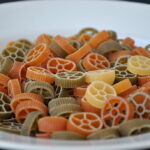 Discover the Most Vibrant and Unique Tri Color Succulent Varieties
Discover the Most Vibrant and Unique Tri Color Succulent Varieties2. Echeveria
Echeverias are a diverse group of succulents that come in various shades of green and red. They have rosette-shaped leaves that give them a unique and eye-catching appearance. These plants prefer well-draining soil and require bright, indirect sunlight.
3. Aeonium
Aeoniums are another popular choice for adding vibrant green and red tones to your garden. They have striking, rosette-shaped leaves that can range from deep red to bright green. Aeoniums thrive in well-draining soil and prefer partial shade.
Remember, when planting succulents, it's crucial to choose the right soil to ensure their health and growth. Well-draining soil will help prevent waterlogged roots and ensure that your green and red succulents thrive in your garden.
 The Prolific Succulent World: A Guide to its 'Mother of Many' Species
The Prolific Succulent World: A Guide to its 'Mother of Many' SpeciesSo, if you're ready to add a burst of color to your outdoor space, consider planting green and red succulents in well-draining soil. Not only will they enhance the visual appeal of your garden, but they will also be low-maintenance and provide you with years of enjoyment.
Place them in an area that receives ample sunlight, as succulents thrive in bright light conditions
Succulents are known for their ability to store water in their leaves, stems, and roots, making them highly resilient plants. However, to ensure their optimal growth and vibrant colors, it is essential to place them in an area that receives ample sunlight.
These fascinating plants thrive in bright light conditions, preferably receiving at least six hours of direct sunlight each day. Placing them in a sunny spot allows them to photosynthesize efficiently and produce the vibrant green and red hues that make them so appealing.
When choosing the perfect spot for your succulents, keep in mind that they may not tolerate extreme heat or intense afternoon sun exposure. If you live in a region with scorching summers, it is recommended to provide them with some shade during the hottest part of the day to prevent sunburn.
Consider placing your succulents near a south-facing window, balcony, or patio where they can bask in the sunlight. If your outdoor space doesn't receive enough sunlight, you can also grow succulents indoors. Just make sure to place them near a window that receives bright indirect light throughout the day.
Remember that succulents are adaptable and can still survive in less than ideal lighting conditions, but their colors may fade, and their growth may slow down. By providing them with sufficient sunlight, you'll ensure that they stay vibrant and healthy, adding a stunning touch to your garden.
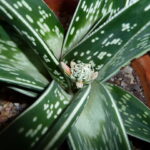 Guide to Aloe Family Diversity: Types of Succulents
Guide to Aloe Family Diversity: Types of SucculentsWater your succulents sparingly, as they are drought-tolerant plants that prefer to be slightly dry
When it comes to succulents, less is definitely more when it comes to watering. These plants are known for their ability to thrive in dry conditions, making them the perfect addition to any garden that requires low maintenance.
Succulents store water in their leaves, stems, and roots, allowing them to survive for extended periods without regular watering. In fact, overwatering can be detrimental to their health, causing root rot and other issues. It's best to keep the soil slightly dry and only water your succulents when the top inch of soil feels dry to the touch.
To water your succulents, pour water directly into the soil around the base of the plant, avoiding getting water on the leaves. Allow the water to soak in and then empty any excess water from the drainage tray. Remember, it's always better to underwater than to overwater your succulents.
Choosing the right soil
One key factor in successfully growing succulents is using the right type of soil. These plants thrive in well-draining soil that allows excess water to escape quickly. A mix specifically formulated for succulents and cacti is recommended, as it provides the ideal balance of moisture retention and drainage.
When potting your succulents, ensure that the container has drainage holes at the bottom to prevent water from pooling and causing root rot. Additionally, adding a layer of rocks or pebbles at the bottom of the pot can further enhance drainage.
Providing adequate sunlight
Succulents are sun lovers and require bright light to thrive. Place your succulents in an area where they can receive at least six hours of direct sunlight per day. If you're growing them indoors, choose a sunny window sill or use artificial grow lights to supplement natural light.
It's important to note that while succulents love sunlight, they can still get sunburned if exposed to intense, direct sunlight for extended periods. If you notice signs of sunburn, such as brown or white spots on the leaves, consider moving your succulents to a slightly shadier spot.
 Discover Vibrant Ruby Red Succulents: Your Perfect Find
Discover Vibrant Ruby Red Succulents: Your Perfect FindChoosing vibrant green and red succulents
One of the most appealing aspects of succulents is their wide range of colors and textures. While green is the most common color, there are also succulents available in vibrant shades of red. These red succulents can add a striking pop of color to your garden and create a visually stunning display.
Popular red succulents include Echeveria 'Red Velvet' with its deep red rosettes, Sedum rubrotinctum 'Aurora' with its red-tipped leaves, and Crassula ovata 'Gollum' with its red-edged tubular leaves.
When selecting red succulents, consider the overall color scheme of your garden and how the vibrant red tones will complement the other plants. Pairing red succulents with green succulents can create a beautiful contrast and enhance the visual appeal of your garden.
Succulents are a fantastic addition to any garden, offering a low-maintenance option that adds beauty and color. By watering sparingly, using the right soil, and providing adequate sunlight, you can enjoy vibrant green and red succulents that thrive and bring life to your outdoor space.
Use a balanced fertilizer to provide essential nutrients to your succulents every few months
When it comes to caring for your vibrant green and red succulents, using a balanced fertilizer is crucial. These plants have specific nutrient requirements that can be met by applying fertilizer every few months.
Using a balanced fertilizer ensures that your succulents receive all the essential nutrients they need to thrive. These nutrients include nitrogen, phosphorus, and potassium, which promote healthy growth, root development, and flowering.
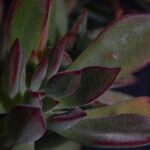 Explore Luxurious Velvet-Leaf Succulents for Your Garden
Explore Luxurious Velvet-Leaf Succulents for Your GardenBefore applying the fertilizer, it's important to check the instructions provided by the manufacturer. Different brands may have varying recommendations for application rates and frequency.
When applying the fertilizer, make sure to dilute it according to the instructions. Succulents are sensitive to excessive amounts of fertilizer, which can lead to root burn or other nutrient imbalances. Dilution helps prevent these issues and ensures that your plants receive just the right amount of nutrients.
One popular method for fertilizing succulents is the "soak and dry" technique. This involves thoroughly watering the plants before applying the fertilizer. The moisture helps the roots absorb the nutrients more effectively.
It's also important to note that succulents have different nutrient requirements during different seasons. During the active growing season, which typically occurs in spring and summer, succulents may require more frequent fertilization. On the other hand, during the dormant period in fall and winter, they may need less or no fertilizer at all.
Remember to monitor your succulents' response to the fertilizer. If you notice any signs of nutrient deficiency or excess, such as yellowing leaves or stunted growth, adjust your fertilization routine accordingly.
By providing your vibrant green and red succulents with a balanced fertilizer every few months, you can ensure that they remain healthy, vibrant, and a stunning addition to your garden.
Keep an eye out for pests such as mealybugs or aphids and take appropriate measures to control them
 Unveiling the World of Succulent Plants and Their Unique Traits
Unveiling the World of Succulent Plants and Their Unique TraitsPests can be a common problem when it comes to growing succulents, especially in outdoor gardens. Mealybugs and aphids are two of the most common pests that can infest your vibrant green and red succulents. These tiny insects feed on the sap of the plants, causing damage and hindering their growth.
Mealybugs are small, soft-bodied insects that are covered in a white, powdery wax. They tend to gather in clusters on the leaves and stems of succulents. If left untreated, mealybugs can weaken the plant and even cause it to die.
Aphids, on the other hand, are small, pear-shaped insects that come in various colors, including green, black, and red. They can be found on the undersides of leaves, sucking the sap from the plant. Aphids reproduce rapidly, so it's crucial to address the issue as soon as you spot them.
To control these pests:
- Inspect your succulents regularly: Regularly inspect your plants for any signs of infestation. Look for clusters of mealybugs or aphids on the leaves and stems.
- Remove affected parts: If you spot any infested areas, remove them immediately to prevent the pests from spreading further. Use a pair of tweezers or a cotton swab dipped in rubbing alcohol to carefully remove the pests.
- Introduce natural predators: Ladybugs and lacewings are natural predators of mealybugs and aphids. You can purchase these beneficial insects and release them in your garden to help control the pest population.
- Use insecticidal soap: If the infestation is severe, you can use insecticidal soap, which is safe for succulents. Follow the instructions on the product label to ensure proper application.
- Maintain a clean environment: Keep your garden clean and free from debris to discourage pests from taking shelter. Remove weeds and fallen leaves, as they can attract pests.
By staying vigilant and taking appropriate measures to control pests, you can ensure the health and vibrancy of your green and red succulents in your garden.
Prune your succulents regularly to maintain their shape and encourage new growth
Pruning is an essential step in maintaining the health and appearance of your succulents. Regular pruning helps to keep them in shape and stimulates new growth. It also allows you to remove any dead or damaged parts of the plant, promoting overall plant health.
 Non-Cactus Succulents: A Guide to Other Succulent Varieties
Non-Cactus Succulents: A Guide to Other Succulent VarietiesWhen it comes to pruning succulents, it's important to follow a few guidelines to ensure you don't damage the plant:
- Choose the right tools: Use a sharp pair of pruning shears or scissors to make clean cuts. Dull tools can crush the stems, making it harder for the plant to heal.
- Identify the areas to prune: Look for any overgrown or leggy stems that need to be trimmed. Also, remove any dead or yellowing leaves or stems.
- Make precise cuts: When pruning, make cuts just above a leaf node or where the stem meets another stem. This helps to encourage new growth and prevents unsightly bare stems.
- Remove any diseased parts: If you notice any signs of disease or pest infestation, prune those parts immediately to prevent further spread.
It's important to note that not all succulents require the same level of pruning. Some varieties, like echeverias, may need more frequent pruning to maintain their compact and rosette-like shape. On the other hand, some succulents naturally have a more sprawling growth habit and may not require much pruning.
Regular pruning should be done during the active growing season, which is typically in spring or early summer. However, if you notice any damaged or diseased parts at any time of the year, it's best to prune them immediately to prevent further harm to the plant.
By incorporating regular pruning into your succulent care routine, you can ensure your plants stay in shape and continue to thrive. So grab your pruning shears and get ready to give your succulents the perfect trim!
Consider arranging your succulents in visually appealing combinations to create a stunning garden display
When it comes to adding a touch of vibrancy to your garden, succulents are the way to go. These hardy plants come in a variety of colors, shapes, and sizes, but it's the vibrant green and red succulents that can truly transform your outdoor space. Whether you have a small balcony garden or a sprawling backyard, incorporating these colorful succulents can add a pop of color and visual interest to your landscape.
Why choose green and red succulents?
Green and red succulents are not only visually striking, but they also offer a host of other benefits. These plants are known for their ability to thrive in drought-like conditions, making them low-maintenance options for busy gardeners. Additionally, their unique colors can provide a stunning contrast against other plants or garden features, creating a focal point in your outdoor space.
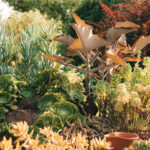 Discover the Enchanting Beauty of Ruffled Succulent Leaves
Discover the Enchanting Beauty of Ruffled Succulent LeavesCreating visually appealing combinations
One of the most effective ways to showcase green and red succulents is by arranging them in visually appealing combinations. Here are a few ideas to get you started:
- Color-blocking: Group succulents of similar colors together to create a bold and eye-catching display. For example, arrange different shades of green succulents in one area and various hues of red succulents in another.
- Contrasting textures: Mix succulents with different textures to add depth and visual interest to your garden. Combine spiky succulents with smooth-leaved varieties to create a dynamic and visually appealing arrangement.
- Vertical gardens: Consider creating a vertical succulent garden by planting various green and red succulents in a wall-mounted planter. This not only saves space but also creates a stunning living wall that will be the envy of your neighbors.
- Container gardens: Plant green and red succulents in different-sized containers and arrange them in groups. This allows you to move the succulents around your garden, creating different displays and experimenting with different color combinations.
Final thoughts
Green and red succulents are not only beautiful additions to any garden but also provide a range of benefits. By arranging these vibrant succulents in visually appealing combinations, you can create a stunning garden display that will be the envy of all who see it. So, don't hesitate to incorporate these colorful plants into your outdoor space and let their beauty transform your garden.
Enjoy the low-maintenance nature of succulents and their ability to bring beauty to your outdoor space
Succulents are a popular choice for garden enthusiasts due to their low-maintenance nature and vibrant colors. If you're looking to add a splash of green and red to your outdoor space, succulents are the perfect option. With their unique textures and striking hues, these plants can effortlessly enhance the beauty of any garden.
Why Choose Vibrant Green and Red Succulents?
1. Visual Appeal: Succulents come in a wide range of shades, but the vibrant green and red varieties are particularly eye-catching. The lush green leaves and deep red tones create a stunning contrast that instantly grabs attention. Whether you want to add a pop of color to your garden or create a focal point, these succulents are sure to captivate.
2. Versatility: Green and red succulents can be incorporated into various garden styles and themes. Whether you have a contemporary, rustic, or tropical garden, these plants will blend seamlessly with the existing landscape. They can be used as stand-alone features in pots, or planted in clusters to create a vibrant succulent bed.
3. Low Maintenance: One of the biggest advantages of succulents is their ability to thrive in arid conditions. These plants store water in their fleshy leaves, allowing them to survive with minimal watering. They are also resilient to pests and diseases, making them an ideal choice for busy gardeners or those with limited gardening experience.
 Fast-Growing Succulents: Seed-Grown Varieties Revealed
Fast-Growing Succulents: Seed-Grown Varieties RevealedTypes of Vibrant Green and Red Succulents
Here are some popular types of succulents that display stunning green and red colors:
- 1. Echeveria: With their rosette-shaped foliage, Echeveria succulents offer a range of green and red hues. They are known for their stunning symmetrical patterns and make a beautiful addition to any garden.
- 2. Sedum: Sedum succulents come in various shades of green and red, creating a visually appealing display. They are drought-tolerant and can be easily propagated, making them a favorite among succulent enthusiasts.
- 3. Aeonium: Aeonium succulents feature striking green and red leaves that form a rosette shape. These plants are known for their dramatic appearance and can add a touch of elegance to your garden.
These are just a few examples of the many green and red succulents available. Visit your local nursery or explore online to discover a wide variety of options suitable for your garden.
Caring for Green and Red Succulents
1. Light: Most succulents thrive in bright, indirect sunlight. Place your green and red succulents in an area where they can receive at least six hours of sunlight per day.
2. Watering: Succulents have shallow root systems and prefer well-draining soil. Water them sparingly, allowing the soil to dry out completely between waterings. Overwatering can lead to root rot and other issues.
3. Soil: Use a well-draining soil mix specifically formulated for succulents. This will prevent waterlogging and promote healthy root growth.
4. Temperature: Green and red succulents generally prefer warm temperatures ranging from 60°F to 80°F (15°C to 27°C). Protect them from frost and extreme heat to ensure their well-being.
By following these basic care guidelines, you can enjoy the beauty of your vibrant green and red succulents for years to come. They will continue to thrive and bring life to your garden with minimal effort on your part.
So why wait? Add some vibrant green and red succulents to your garden and experience the joy of their low-maintenance nature and stunning visual appeal!
Frequently Asked Questions
1. What are succulents?
Succulents are plants that store water in their leaves, stems, or roots, allowing them to survive in arid conditions.
2. Why are vibrant green and red succulents popular?
Vibrant green and red succulents add a pop of color and uniqueness to any garden or indoor space, making them highly sought after by plant enthusiasts.
3. How do I care for vibrant green and red succulents?
These succulents require well-draining soil, plenty of sunlight, and infrequent watering. It's important to avoid overwatering as it can lead to root rot.
4. Can vibrant green and red succulents be grown indoors?
Yes, vibrant green and red succulents can be grown indoors as long as they receive sufficient sunlight and are placed near a window or under grow lights.
If you want to read more articles similar to Vibrant Green and Red Succulents: Perfect for Your Garden, you can visit the Varieties and Colors category.

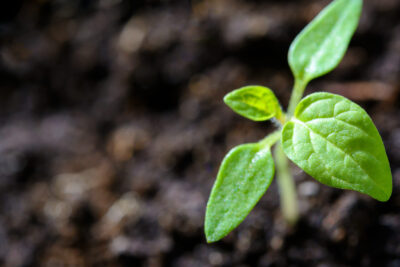
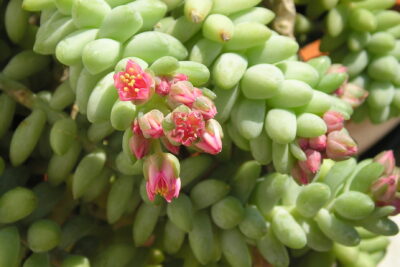



You Must Read